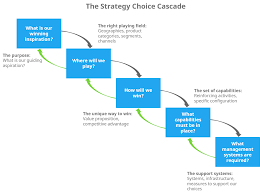
Mastering Innovation Strategy: A Path to Success in the Digital Age
The Power of Innovation Strategy
Innovation is the lifeblood of progress and growth in today’s rapidly evolving business landscape. To harness the full potential of innovation, organisations must develop a robust innovation strategy that aligns with their goals and values.
Defining Innovation Strategy
An innovation strategy outlines a systematic approach to fostering creativity, generating new ideas, and implementing groundbreaking solutions. It involves setting clear objectives, allocating resources effectively, and creating a culture that encourages experimentation and learning.
The Key Components
Effective innovation strategies typically include:
- Vision: A compelling vision that inspires and guides the innovation efforts towards a common goal.
- Leadership: Strong leadership support to drive innovation initiatives and create a culture of continuous improvement.
- Resources: Sufficient resources allocated to research, development, and implementation of innovative ideas.
- Cross-functional Collaboration: Encouraging collaboration across departments and disciplines to leverage diverse perspectives and expertise.
- Risk-Taking Culture: A willingness to take calculated risks and learn from failures as part of the innovation process.
The Benefits
An effective innovation strategy can yield numerous benefits for organisations, including:
- Competitive Advantage: Innovating allows companies to differentiate themselves from competitors and stay ahead in the market.
- Growth Opportunities: New products, services, or processes resulting from innovation can open up new revenue streams and expand market reach.
- Enhanced Customer Experience: Innovative solutions can lead to improved customer satisfaction and loyalty.
Cultivating Innovation
To foster a culture of innovation within an organisation, leaders must nurture creativity, empower employees to experiment, and celebrate successes. By embedding innovation into the core values of the company, businesses can adapt to change more effectively and thrive in dynamic environments.
Understanding Innovation Strategy: Key Questions and Answers
- What are the 7 steps of the innovation process?
- What is a innovation strategy?
- What are the 4 types of innovation strategies?
- What is the innovation strategy?
- What is a strategic innovation?
What are the 7 steps of the innovation process?
Innovation strategy is a dynamic process that involves several key steps to bring ideas to fruition and drive organisational growth. The 7 steps of the innovation process typically include: idea generation, idea screening, concept development and testing, business analysis, product development, market testing, and commercialisation. Each step plays a crucial role in transforming innovative concepts into successful products or services that meet market needs and create value for both the organisation and its customers. By following these structured steps, businesses can navigate the complexities of innovation effectively and maximise their potential for success in today’s competitive landscape.
What is a innovation strategy?
An innovation strategy is a structured approach that organisations adopt to drive creativity, foster new ideas, and implement groundbreaking solutions. It serves as a roadmap for aligning innovation efforts with business objectives, guiding resource allocation, and cultivating a culture that encourages experimentation and learning. By defining clear goals, leveraging diverse expertise, and embracing risk-taking, an innovation strategy enables companies to stay competitive, seize growth opportunities, and enhance their overall performance in today’s dynamic business landscape.
What are the 4 types of innovation strategies?
When exploring innovation strategies, it is common to encounter the question: “What are the 4 types of innovation strategies?” The four primary types of innovation strategies are incremental innovation, disruptive innovation, architectural innovation, and radical innovation. Incremental innovation involves making small improvements to existing products or processes, while disruptive innovation introduces entirely new solutions that disrupt traditional markets. Architectural innovation focuses on reconfiguring existing components in a novel way, and radical innovation entails creating groundbreaking advancements that revolutionise industries. Understanding and strategically applying these distinct types of innovation can empower organisations to drive growth, stay competitive, and adapt to changing market dynamics effectively.
What is the innovation strategy?
The innovation strategy is a structured approach that organisations adopt to drive creativity, generate new ideas, and implement transformative solutions. It encompasses setting clear objectives, allocating resources efficiently, and fostering a culture that promotes experimentation and learning. By defining a roadmap for innovation, companies can align their efforts with overarching goals, seize opportunities for growth, and stay competitive in a rapidly changing market landscape. Embracing an innovation strategy empowers businesses to adapt to evolving trends, anticipate customer needs, and continuously improve their products and services to meet the demands of the future.
What is a strategic innovation?
A strategic innovation refers to a deliberate and purposeful approach to introducing novel ideas, products, or processes that align with an organisation’s long-term goals and competitive positioning. It involves identifying opportunities for growth, differentiation, or efficiency improvement and implementing innovative solutions in a systematic manner. Strategic innovations are not just about creativity but also about strategic planning, resource allocation, and market relevance. By strategically innovating, companies can stay ahead of the curve, respond to changing market dynamics effectively, and create sustainable value for their stakeholders.